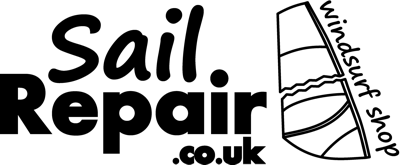2021 Goya Airbolt 120
First impressions – Nice looking board with a limited paint finish. I expected it to have the option for a single back strap but it just has options for double back straps both inboard or outboard. The board is quite a unique shape giving the bottom of the hull a very 3D shape with stepped ridges running most of the length of the board.
Most dedicated foil boards have wide buoyant tails to help support the rider when he/she moves back to weight the foil and get flying. Instead of this usual arrangement goya have moved the foil position further forward. So when you look at the deck of the board it looks almost like a traditional pintail shape with the straps forward and the tail not overly wide. But when you look at it from the side you realise that the rear stap still lines up with the front of the foil mast.
The mast track is quite far back so not far in front of the front straps and there looks to be plenty of open deck up front.



On the water -The 120 was easy to uphaul. With the rearward mast track you can put your front foot in front of the mast base and uphaul in a traditional manner despite the boards relatively short length. Oncy the sail is up the board feel buoyant and has a slightly corky feel dut to all the volume packed into a compact shape.
The board is rated to take up to a 8.0m sail and I have no doubt it can take it. I tried the board with a 7.5 and it was certainly doable but the board came more aline and pleasant with a 6.5 or smaller. The fact that the mast track is close to the front straps means you are standing close to the rig which I don’t feel is ideal with bigger sails.
Getting flying – this is where things got interesting. I am used to more traditional or racey foil boards and I tend to pump up onto the foil to get flying that bit earlier. When I tried this on the Goya the board would rock from side to side disturbing the water flow. I think this is caused by the bottom not being flat so you don’t have a stable platform from which to pump both sail and board. I found it better to actually let the board accelerate in its own right and get flying that way. Someone new to foiling would most likely find this technique easier but for me I think the end result was that I required about 1kt more wind to get flying than on similar sized dedicated foil boards. There is not much room to get your rear foot between the straps so you are best getting into the back strap early.
In flight – With a sail 6.0 or smaller the position is very comfortable in the straps, one of the most comfortable foil boards I have used. With the bigger sails that the board is rated to take I felt a bit close to the rig. Nothing wrong with that except when the wind picks up a bit you can’t distance yourself from the power so easily so you have to change down that bit earlier. Height control is easy. The board shrugs off the majority of touch downs. It is not the longest of boards at just 205 long so it is possible to catch the nose if it comes down into some chop. On flat water the board can look after itself.
Gybeing – The board carves round nicely. I feel the double foil tracks + the deep tuttle box adds a bit of weight in the tail and in lighter winds I was aware of the weight dragging the board down a bit once you are without any rig power and just gliding round. But overall the board feels nimble and maneuverable.
Overall – Despite the unusual bottom shape and maybe extreme looks the board is actually fairly easy to use and will feel more familiar than the big wide tailed boards to anyone new to wind foiling. The board probably suits lower aspect foils and smaller sail best.
